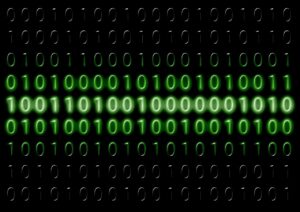Introduction
The evolution of programming languages in computer technology is a captivating journey that reflects the dynamic nature of the computing industry. From the early days of machine-level code and assembly languages to the high-level, user-friendly languages we use today, the development of programming languages has been instrumental in shaping the modern digital landscape. This article takes you through this fascinating evolution, highlighting key milestones, influential languages, and their impact on the world of computing.

-
The Dawn of Programming Languages
1.1 Machine Code and Assembly Languages
The concept of programming languages can be traced back to the very beginning of computing. In the 1940s and 1950s, early computers could only be programmed using machine code, a binary language understood by the computer’s hardware. Writing in machine code was arduous and error-prone, leading to the development of assembly languages.

Assembly languages provided a more human-readable way to program computers by using mnemonics and symbols to represent machine code instructions. The first assembly language, assemblers, and assembly languages like Assembly for UNIVAC and Assembly for IBM’s early computers simplified the programming process, but they were still tied closely to the computer’s architecture.
1.2 Fortran and the Birth of High-Level Languages
The late 1950s saw the emergence of the first high-level programming language: Fortran (short for “Formula Translation”). Developed by IBM, Fortran allowed programmers to write code using more abstract concepts, making it easier to express mathematical and scientific calculations. Fortran’s success marked a pivotal moment in programming language evolution, emphasizing the importance of human-readable code and portability across different computer systems.

-
The Proliferation of High-Level Languages
2.1 COBOL and ALGOL
The 1950s and 1960s witnessed the birth of several other high-level languages, each designed to cater to specific application domains. COBOL (Common Business-Oriented Language) was developed for business and data processing, while ALGOL (short for “Algorithmic Language”) aimed to be a universal language for algorithm development.

COBOL’s longevity in the financial and business sectors exemplifies the adaptability and durability of high-level languages. ALGOL, although not as widely used in practice, laid the foundation for future language designs, inspiring languages like Pascal and C.
2.2 The C Programming Language
The 1970s introduced one of the most influential programming languages in the history of computing: C. Created by Dennis Ritchie at Bell Labs, C was designed to be a general-purpose, portable language with low-level features for systems programming. C’s impact was profound—it served as the foundation for the development of the Unix operating system, which in turn influenced the development of other operating systems and languages.
C’s simplicity, efficiency, and close relationship with hardware made it a favorite among systems programmers. It also gave rise to the C Standard Library and served as the basis for C++, an extension of C that introduced object-oriented programming features.

III. The Rise of Object-Oriented Programming
3.1 C++ and Object-Oriented Programming (OOP)
In the 1980s, C++ emerged as a powerful extension of C, introducing the principles of Object-Oriented Programming (OOP). OOP emphasized the organization of code into reusable objects, promoting modularity and code reusability. This paradigm shift revolutionized software development by making it more efficient and manageable.
C++’s success in implementing OOP concepts led to its widespread adoption in industries ranging from gaming to embedded systems. It also played a significant role in the development of graphical user interfaces (GUIs) and applications.
3.2 Java and Platform Independence
The 1990s introduced another game-changer in the form of Java. Developed by Sun Microsystems (later acquired by Oracle), Java was designed with the goal of platform independence. Java programs are compiled into an intermediate bytecode that can run on any system with a Java Virtual Machine (JVM). This “Write Once, Run Anywhere” philosophy made Java a popular choice for web applications, mobile apps, and enterprise software.

Java’s rise in popularity was further propelled by its security features, robust libraries, and the growth of the internet. Today, Java remains a prominent language in both enterprise and Android app development.
-
The Emergence of Scripting Languages
4.1 Python and Ruby
The late 1980s and 1990s saw the emergence of scripting languages like Python and Ruby. These languages prioritized ease of use and rapid development, making them popular choices for web development, automation, and data analysis.
Python, in particular, gained widespread acclaim for its simplicity, readability, and versatility. It is now a cornerstone in fields such as data science, artificial intelligence, and web development.
Ruby, known for its elegant syntax and object-oriented nature, found a niche in web development with the Ruby on Rails framework.

4.2 JavaScript and the Web Revolution
JavaScript, despite being unrelated to Java, became the de facto scripting language for web development. Introduced in the mid-1990s, JavaScript allowed developers to create dynamic, interactive web pages. Its integration with web browsers led to the development of web applications and gave rise to a thriving ecosystem of libraries and frameworks.
The combination of HTML, CSS, and JavaScript became the foundation for the modern web, enabling rich internet experiences and applications. Today, JavaScript remains a pivotal language in web development, with technologies like Node.js enabling server-side development as well.
-
Modern Languages and Paradigms
5.1 C# and the .NET Framework
The early 2000s saw the introduction of C#, a language developed by Microsoft as part of the .NET Framework. C# combines the power of C++ with the ease of use of Java and incorporates features from various programming paradigms, including OOP and functional programming.

C# has found success in game development (via Unity), desktop applications (Windows Forms and WPF), web development (ASP.NET), and cloud computing (Azure). The .NET ecosystem, including languages like F# and Visual Basic, continues to evolve.
5.2 Functional Programming and Scala
Functional programming, a paradigm that treats computation as the evaluation of mathematical functions, gained renewed interest in the 21st century. Languages like Haskell, Erlang, and Scala offered developers new ways to approach problem-solving by focusing on immutability and pure functions.
Scala, in particular, gained popularity for its fusion of functional and object-oriented features. It runs on the Java Virtual Machine (JVM) and is used in big data processing with Apache Spark.
5.3 Go and Rust: A Focus on Performance and Safety
In recent years, two languages have gained attention for their emphasis on performance and safety: Go (also known as Golang) and Rust.
Go, developed by Google, is designed for efficiency and simplicity. It excels in concurrent programming, making it suitable for cloud computing and microservices.
Rust, on the other hand, prioritizes memory safety and system-level programming. It offers fine-grained control over memory management without sacrificing safety, making it an attractive choice for systems programming and security-critical applications.

-
Conclusion and Future Directions
The evolution of programming languages in computer technology is a testament to human innovation and the ever-expanding possibilities of software development. From the early days of machine code to the multi-paradigm languages of today, each era has contributed to the growth and transformation of the computing industry.
Looking ahead, the future of programming languages is likely to be shaped by emerging technologies such as quantum computing, artificial intelligence, and augmented reality. New languages and paradigms will continue to emerge to address the unique challenges and opportunities presented by these fields.
In conclusion, the evolution of programming languages mirrors the evolution of computing itself—a journey marked by continuous innovation, adaptation, and a commitment to making technology more accessible and powerful for people worldwide. As we venture into uncharted territories of computation, we can be certain that programming languages will play a pivotal role in shaping the digital landscape of tomorrow.

